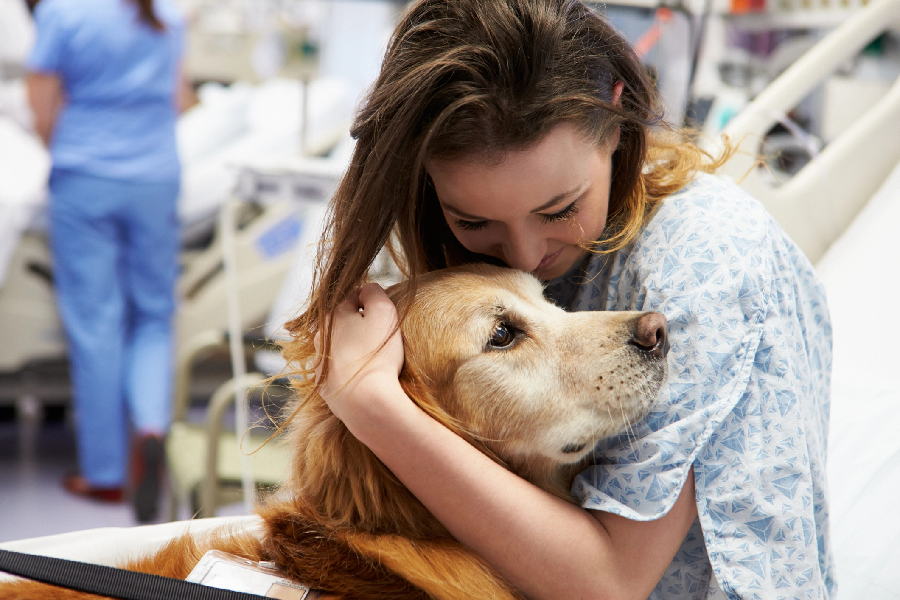During a goal-oriented treatment session, animal-assisted therapy (AAT) includes taking care of or spending time with an animal. AAT is used to supplement the benefits of standard treatment and can be utilized to achieve physical, educational, emotional, and/or psychological goals.
What Types of Animals Are Suitable for The Program?
Dogs, cats, and horses are the most common animals for Animal-assisted therapy training. On the other hand, birds, rabbits, guinea pigs, pigs, and llamas, can be employed as well. Critical considerations that should be considered include the size of the facility and location and patient demographic.
Any animal used in therapy or visitation should be certified by a company that can:
- The animal and its owner must be educated on a regular basis.
- During volunteer activities, liability insurance is required for both the animal and the owner.
What Is the Role of Animal-Assisted Therapy?
Animal-Assisted Therapyis accessible to people of all ages, and it can be used individually or in groups. Some of the topics addressed by AAT are homesickness, sadness, anxiety, PTSD, substance abuse, schizophrenia, developmental disorders, behavioral difficulties, and other medical conditions.
People with neurological illnesses like dementia and Parkinson’s disease benefit from it as well. In such circumstances, it aids in the reduction of psychological discomfort and keeps the person motivated to stick to their primary treatment plan.
Benefits of Animal-Assisted Therapy
- It helps people relax and reduces anxiety.
- It helps people feel less lonely.
- It is reassuring.
- It stimulates the mind.
- It can be used as a fun diversion or escape.
- In the therapeutic process, they can act as catalysts.
What Is the Animal’s Response to Animal-Assisted Therapy?
Animals, particularly dogs, like the attention and stimulus provided by therapy work, especially when it is done correctly. However, the animal may experience burnout as a result of this. This is something that both the animal handler and the mental health professional must keep in mind. Before and after each session, it’s critical to analyze the animal’s stress levels and get a sense of their overall health. This guarantees that both the client and the therapy animal benefit from the sessions.
Is Animal-Assisted Therapy Something You’d Be Interested in?
For some people, AAT is not a good fit. Before allowing a client to connect with a therapy animal, the therapist considers a variety of criteria.
It is possible that AAT will not be advised if the following conditions exist:
- Animals frighten or repulse the client.
- They don’t have any feelings for animals.
- They’ve abused or been harmed by an animal in the past.
- Because of their religious convictions, they are unable to interact with the type of therapy animal used in the facility.
- They have an allergy to animal fur or dander.
The therapist examines the client’s level of impulsivity, hyperactivity, and violence. This ensures that the therapy animal is not harmed throughout the session.
Become A Part of Animal-Assisted Therapy by Volunteering.
You may help shape the future of Animal-Assisted Therapy by volunteering at the Mallard Lake Detox Center. Visit our treatment center to learn more about how you can help.

